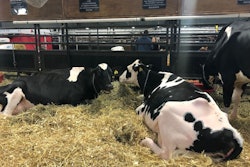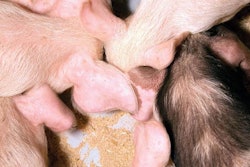
Copying is the highest form of flattery, but what is the limit?
Reducing antibiotics remains in vogue despite countless research reports that have clearly demonstrated several ways to accomplish this. Yet there is nothing better than riding the wave, especially if you have not spent your own money to create it and you only have to follow the general tide of the market.
This is why most companies today spend considerable effort on this topic that truly is not the centerpiece of nutrition science that we are made to believe. But it still makes money and we will continue to see more and more of it as long as there is money to be made out of it.
New trends
Yeast is another example where a normal ingredient suddenly became fashionable and the acclaimed cure for many problems, real or perceived. Then, everyone started producing some form of a yeast product, which were tried as solutions to every problem that plagues the animal industry. Money was made (and lost) and yeast became the talk of the day, and now it is just another interesting ingredient waiting to come back into the spotlight.
The new trend that is becoming more dominant in public and private forums is phytogenics (you can call them a number of names, but they remain compounds we extract from plants). In fact, I believe this is a trend that will remain with us for the long foreseeable future, if only because there are thousands upon thousands of such interesting plant compounds that we have still to explore in animal nutrition. So far, all the activity we observe regards only a handful of phytogenic compounds and, lamentably, these commercial products are more or less the same. Copy is the highest form of flattery, and the original products have been copied again and again – as cheaper versions, with some being actually really good after all.
An added twist
There is even a more ingenious twist to this kind of marketing, and it is not just in animal nutrition that this is relevant. It is about creating your own trend. You can do this by advertisement, research funding, political lobbying, conferences, articles, websites, forum discussions and social media. In fact, a successful trend with long-lasting profit prospects will benefit from the concurrent application of all of the above. We only need to watch how modern politics work to understand how the same techniques can be – and in fact are already being – applied to create “needs” and trends in animal nutrition. The best of them do it in a way that appears as the normal progress of things.
Of course, there is nothing wrong in any of the above. It is (still) a free world that (many of us) live in and business is business, whereas we are all “adults in the room” to use a famous phrase borrowed from recent politics. So, education and experience are what we have as counter-weapons to discern truth from false attempts to distort reality and create profit opportunities at the expense of real scientific progress. Here, I will mention the great service offered to the public by the now mostly compromised extension services of government and university institutions. This is something that we need to address and reinstate so as to act as a bulwark against fake science and fake marketing.
The positive side
But not all is gloom, as there is a positive side when many players enter a specific field. That is, under the right regulatory supervision, healthy competition can work toward reducing prices while offering a wholesome product to the end user, the farmer. This is again true to all segments of business and, in fact, it already happens in our industry, especially in the case of enzymes. Phytases, for example, have become so common and easy to produce that customers are spoiled for choice among equally effective products that are now priced as commodities. Again, it is a matter of how we use the tools of the market and not the market itself that distorts things.
Modern animal nutrition tends to become obsessed with trends that are being pushed by private interests that provide the necessary funding. I think this is a healthy activity that is required to balance the publicly funded research that was often disconnected from real industry problems. Only the problem today is that there is little or no real publicly funded research and this tends to create a pendulum effect. Hopefully, it will be balanced once we get serious about the future of our industry.














